The Suburban Nightmare: Deconstructing Conformity in “Vivarium”
Gemma and Tom, a young couple with dreams of settling down, find themselves lured into a real estate office by a pushy, oddly-dressed agent. His persistence leads them to Yonder, a newly developed neighborhood that promises suburban bliss. However, what they discover is far from their expectations: rows upon rows of identical green houses stretch into the horizon, a monotonous landscape seemingly generated by a simple copy-paste command.
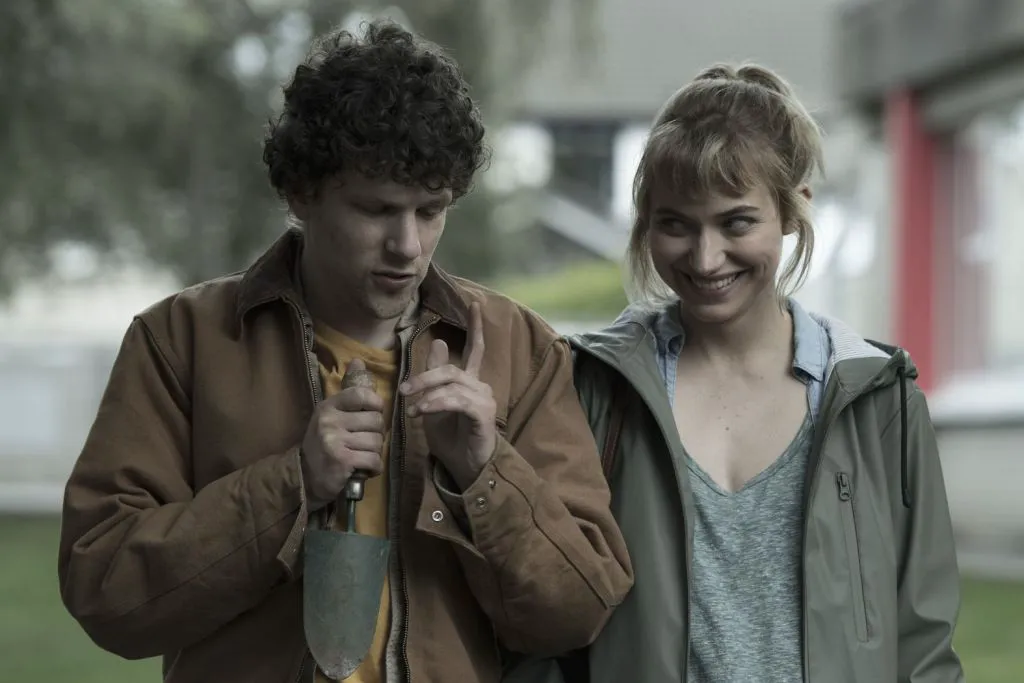
The realtor guides Gemma and Tom into one of these cookie-cutter homes. Inside, the scene is equally sterile: bland, staged décor, generic artwork featuring the same house (number 9), and furniture seemingly plucked from a glossy advertisement. The agent promptly abandons them, leaving the couple stranded in this artificial paradise. Escape proves impossible; every road leads back to house number 9. With no gas in their car and no cell service, Gemma and Tom are trapped, forced to navigate the nauseating uniformity of Yonder and desperately seek a way back to civilization.
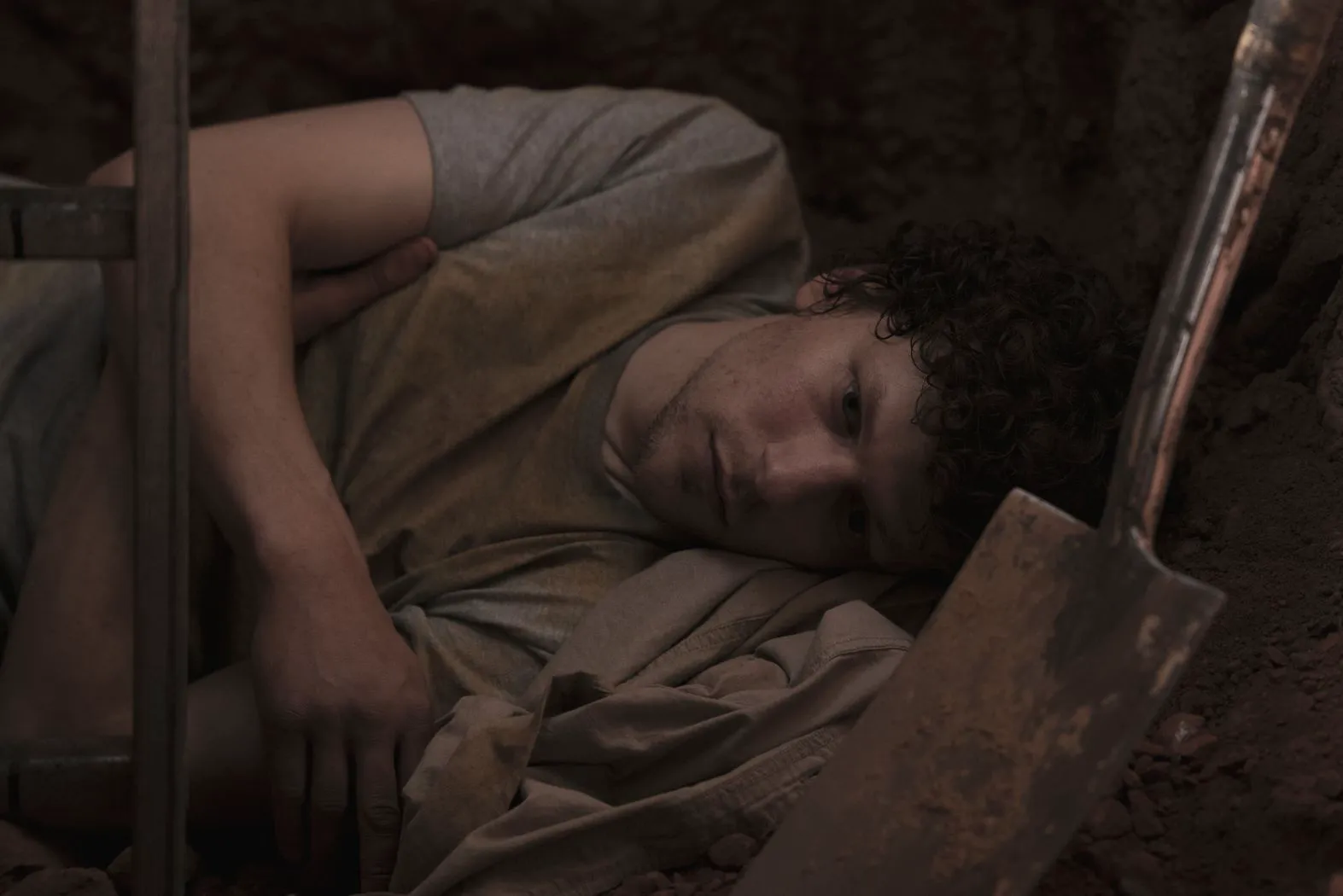
A Conceptual Cage: Social Commentary Through Genre
“Vivarium” shares thematic similarities with films like “The Platform,” operating as a claustrophobic thriller set within a confined space. Both explore the disintegration of human identity under dehumanizing conditions, serving as allegories for social issues. While “The Platform” tackles societal inequality, “Vivarium,” directed by Lorcan Finnegan, delves into a different kind of horror.
Finnegan, known for his low-budget debut “Without Name,” explores not only social anxieties but also biological imperatives.
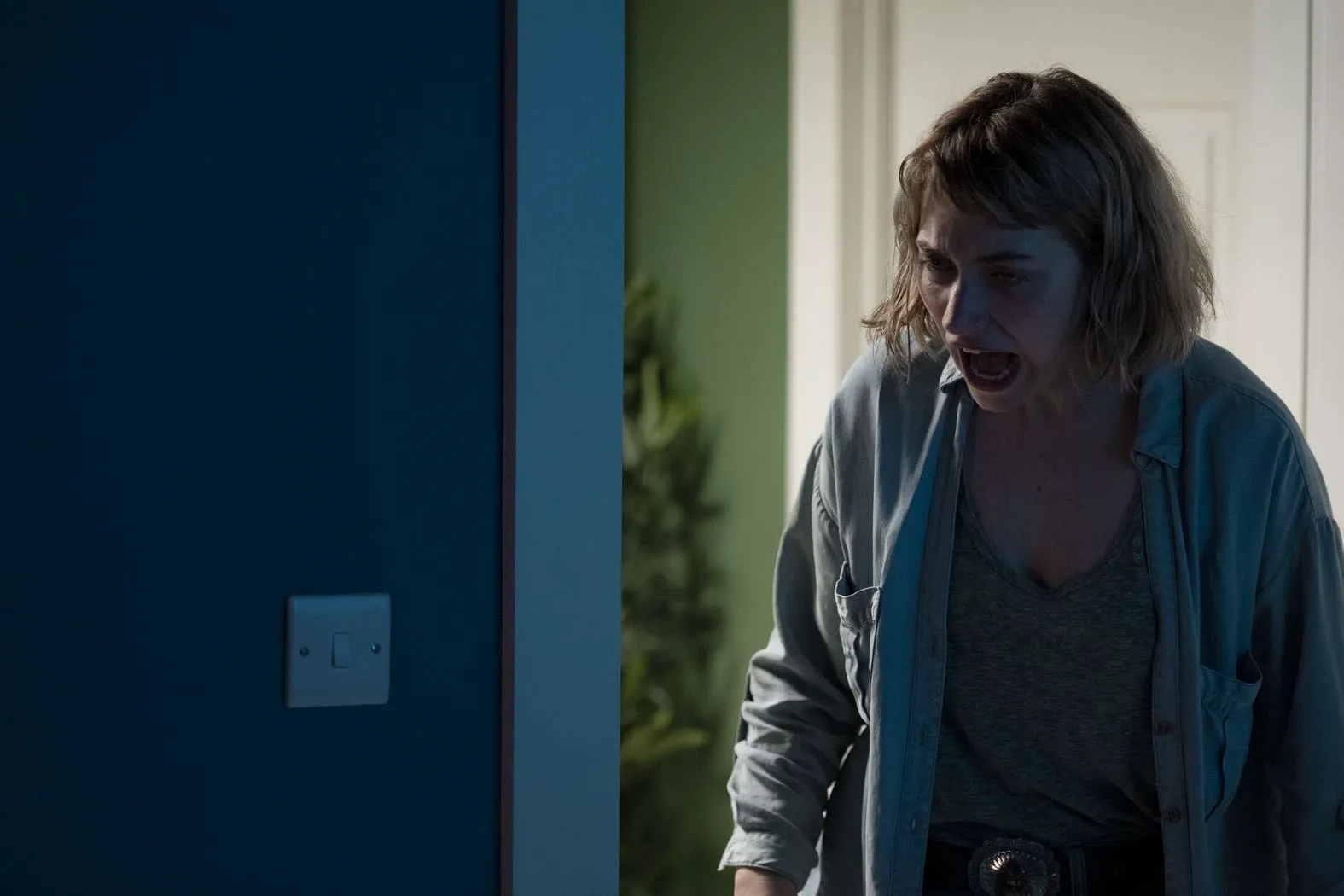
Nature vs. Nurture: The Roots of Our Existence
The film opens with two significant scenes: a cuckoo chick ejecting its adoptive siblings from the nest and Gemma asking her students to mimic trees. The horror in “Vivarium” lies not only in the characters’ palpable fear but also in the relatable dread of being trapped in a superficial, obligation-filled existence. This fear materializes when a baby arrives in a box, rapidly aging into a teenager.
Finnegan probes deeper, questioning the very foundations of our lives. Are our patterns of existence, our routines and habits, driven by biology or societal conditioning? Are we products of our animal instincts or victims of advertising, social pressure, and governmental influence?
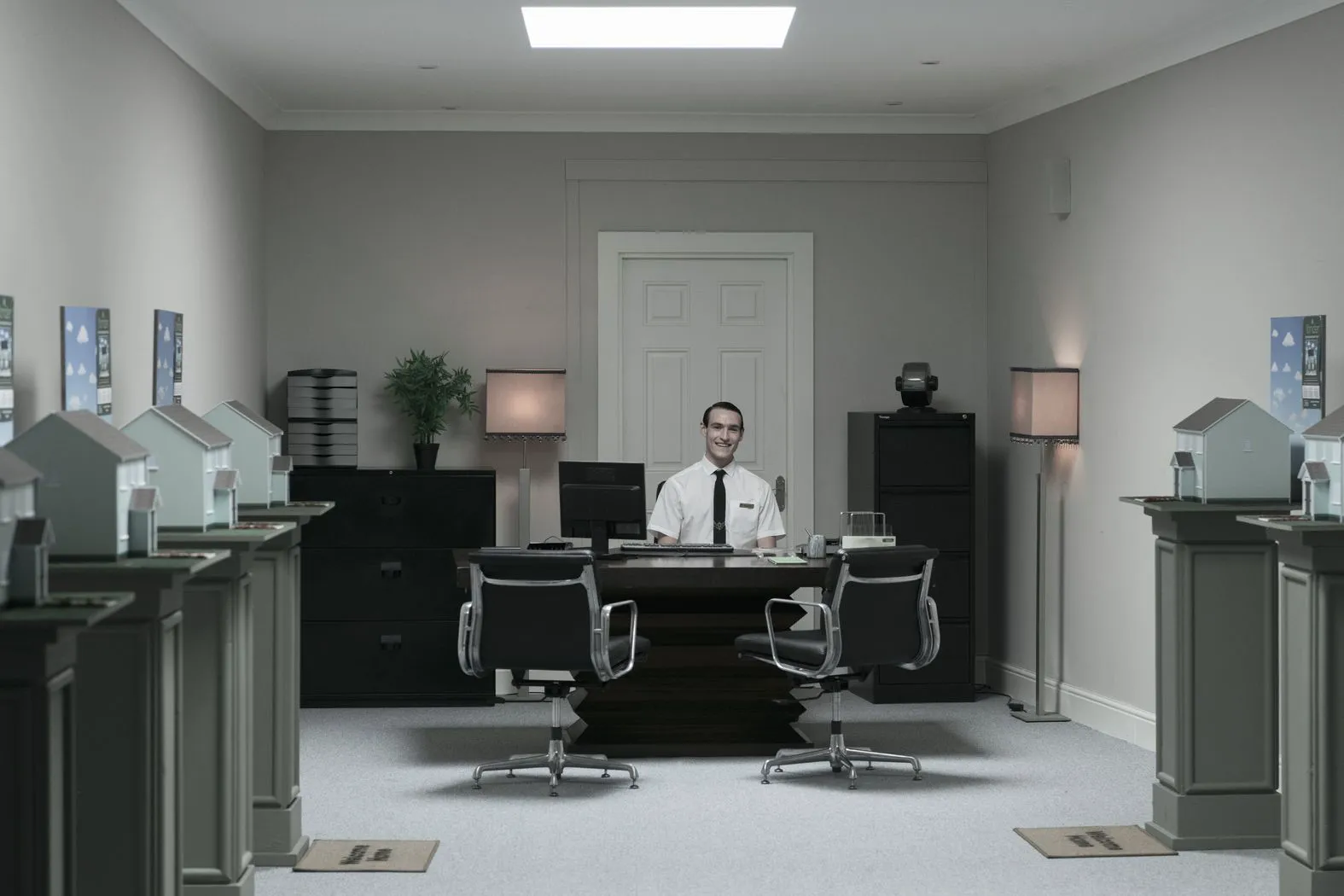
Surreal Suburbia: The Art of the Unnatural
This philosophical inquiry is seamlessly integrated into the film’s unsettling atmosphere. To depict the imprisonment of an unnatural life, Finnegan embraces the unnatural in every aspect. The CGI-rendered houses of Yonder, the Barbie-esque interiors, the cartoonish clouds, and the screeching child with an adult voice all contribute to the film’s absurd and unsettling tone. At times, “Vivarium” evokes the works of David Lynch, blending the mundane with the surreal. However, Finnegan’s approach is more controlled, his madness more calculated.
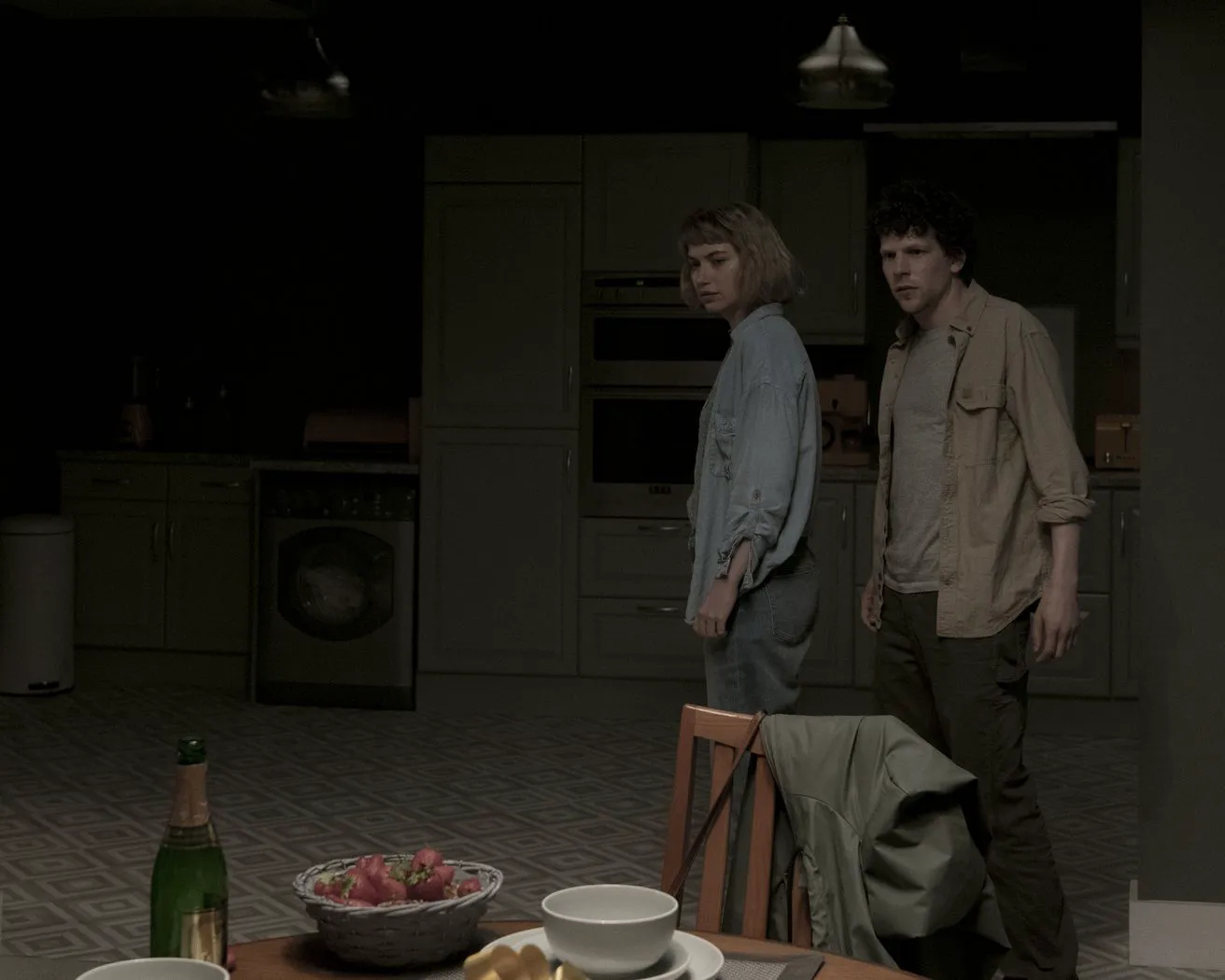
Restraint and Resonance: The Power of Subtlety
Despite its potential for shock value, “Vivarium” is surprisingly restrained. Tom and Gemma gradually adapt to their absurd surroundings, finding routine in the mundane. Tom’s daily digging in the plastic-like soil becomes a job, while the monstrous child triggers Gemma’s maternal instincts. The film’s strength lies not only in its original set design but also in its restraint, avoiding gratuitous exploitation of its unsettling imagery. The fewer overtly disturbing scenes, the more potent each one becomes, tapping into our deepest social anxieties.
The existential dread of suburban conformity was already captured by Malvina Reynolds in her song “Little Boxes.” The idea that the primary problem of modern life is its cyclical nature may predate cinema itself, but Finnegan succinctly illustrates the paradox of the biological and the social. Which came first, the chicken or the egg? In the world of “Vivarium,” perhaps it’s the real estate agent and the new IKEA furniture.